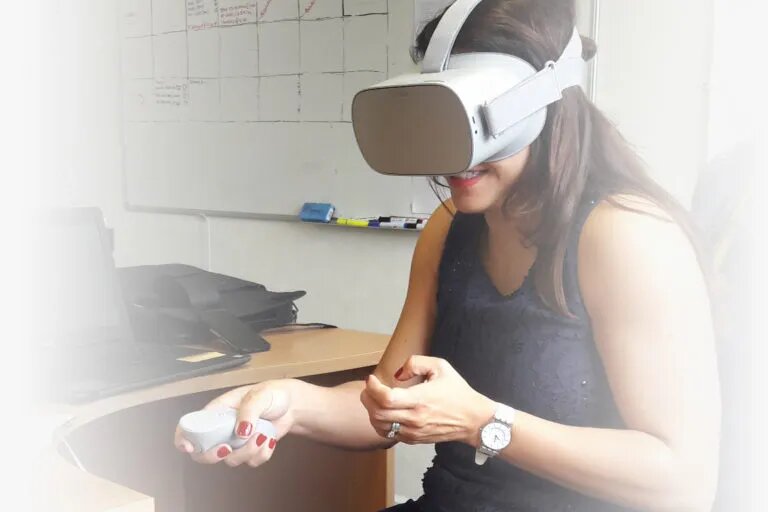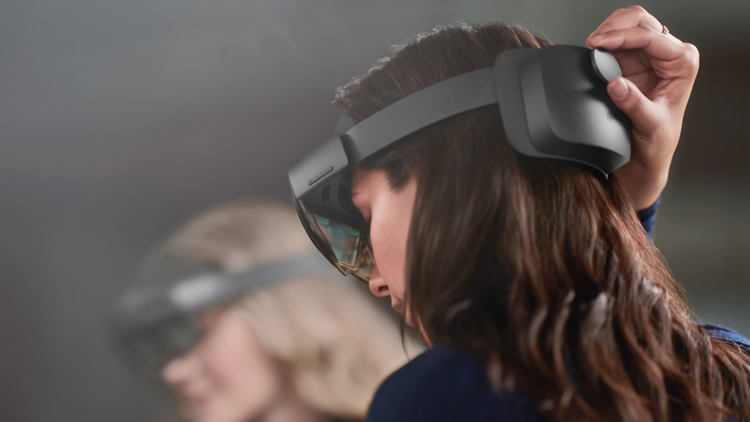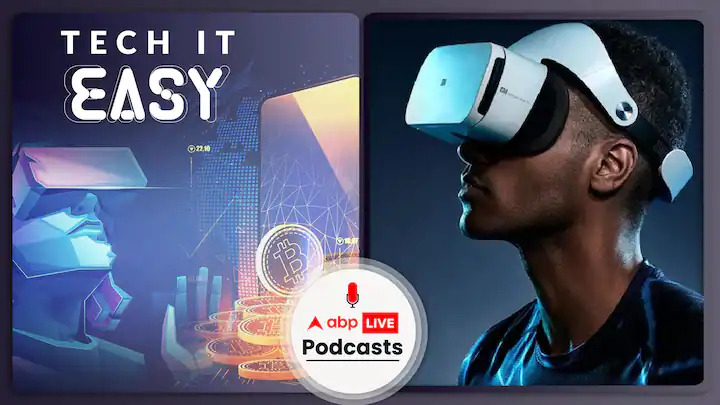If you are thinking about introducing Augmented or Virtual Reality (referred to together as “XR”) into your organization, there are some challenges that you should be prepared to face. Technical challenges, budgetary considerations, and logistical hurdles all pale in comparison to the human factor: getting your workforce to adopt a new computing form factor. After witnessing a lot of attempts from managers who have tried motivating XR adoption either using the carrot or the stick, we decided it might be time to address Change Management head on. Below, we offer 5 quick suggestions that will increase the success of your XR implementation.
Active Executive Sponsorship
Formal executive sponsorship is a critical foundation to a new XR initiative whether it is exploratory, a proof of concept, or a full implementation. Standard elements of sponsorship will include: coordinating necessary resources, offering encouragement, responding to concerns, and removing blockers to change. However, formalizing sponsorship involves the identification of KPIs which will be included in both employee and managers quarterly evaluations. What KPIs you choose will, of course, depend on the application (Remote Advisor, VR Training, Digital SOPs, etc) and the form factor you’re employing (AR, VR, Tethered/Untethered, etc). Employees want to see and hear an executive’s dedication to change and how they leverage their leadership skills is invaluable. For reference, according to a study conducted by Prosci, “Technology projects with active executive sponsorship have a 70 percent higher rate of success than those without.” Despite this impressive success rate, the same study reports that “50 percent of executives don’t understand their sponsorship roles and how to lead effective change.”
Define Clear Use Cases
Once executive sponsorship is established, the next critical step is to define clear use cases for each XR application you intend to use. This should not be driven by the hardware, but rather by the software or platform provider, acknowledging that a platform should support several applications simultaneously. Defining use cases achieves two goals; First, it sets reasonable expectations for what you’d like to achieve with the deployment. A use case defines specific business objectives that a software system is designed to accomplish and explains through a series of steps how a person can utilize it to reach goals. Second, defining a use case will also provide guidance for Key Performance Indicators for measuring the success of the application. When well developed, a use case can help you recognize where errors could occur during the product onboarding process, provide resolutions to correct mistakes that may arise, and let you determine if the technology is right for your company.
Find A Champion (…Find A Few)
XR is an emerging technology. Drawing parallels from the last seismic paradigm shift in personal computing, the mobile phone revolution, XR’s development is probably somewhere squarely in the “Brick Phone” era. And, much like the brick phone with its shoulder-strapped battery pack, it is tragically unfashionable (despite what we geeks think). Any organization considering implementing XR should not discount what a significant hurdle it is that your potential users do not want to appear foolish. Finding or assigning one or more “Champions”, individuals who are tasked with normalizing the wear and use of head-mounted computers, will normalize technology and encourage their colleagues to embrace it and laugh at themselves. Moreover, this individual or individuals are entrusted to reinforce to colleagues that their contributions are valued by upper management, monitor the new technology’s progress, reiterate its usefulness to skeptics, and emphasize that it’s a long-term business initiative that they must become familiar with and comfortable using.
To familiarize and normalize new technology a champion can use it during staff meetings, high-profile events, or during a standard workday. At their core, you can consider champions of technology to be teachers, motivators, influencers, and even salespeople that seek results.
Remove Blockers
Of the five recommendations in this list, this one is the most difficult to define. Blockers can arise in many forms: technical, cultural, financial, or even external. Consider these brief examples:
“It’s too risky!”
Your organization has well established systems and protocols for mobile device security including password security guidance and Single Sign On functionality. When considering the adoption of a head-mounted computer with voice-recognition as the primary data-input source your Security and Mobility representatives identify multiple security risks: Users have to speak their passwords out loud, as shared devices users might forget to log out, etc. In response, these teams throw up multiple red-flags and resist the adoption of AR headsets.
“We already tried that – it didn’t work.”
Leading a culture of innovation means that you may try and fail with many solutions on your path to building one that is successful. If clear expectations aren’t established, this iterative process can leave a sour taste in the mouth of some team members. Experiencing a failure of a prior iteration may lead them to make the assumption that new efforts will fail too.
Once identified, technology adoption blockers must be addressed. To do this, managers and champions, with the support of executives, should allocate time and resources to resolve them. To address hurdles over the past several years, we’ve used a combination of in-house technical development, policy adjustments, employee training, as well as working with the product vendors themselves to make changes to the product.
Feedback And Report
Receiving unbiased feedback is a pivotal change management tool that can guarantee you are fully optimizing your new technology system. To do this, collect and evaluate employees’ thoughts about, and experiences with, the new system. The confidential collection of information and data can provide you with a basis for analysis that can uncover both positive and negative aspects of your employees’ user experience. From there, you’ll have a solid overview of what benefits are being realized and where improvements can be made for greater success. In addition to upgrading the product onboarding process, your employees can continuously learn, remain engaged, and potentially earn higher performance reviews.
During this process, it is important that we don’t punish critical feedback. Fostering a culture that promotes innovation requires a sincere consideration of input, the good and the bad, from users. When managers respond to negative feedback with ‘gentle reminders’ of the positive attributes of the technology, users might begin to understand that honesty is less important than obedience. Critical feedback is important to inform continuous improvement cycles and should be rewarded.
Quelle:
https://www.voxelrevolution.com/2021/08/16/change-management-for-head-mounted-computers/
By: Thom Strimbu




